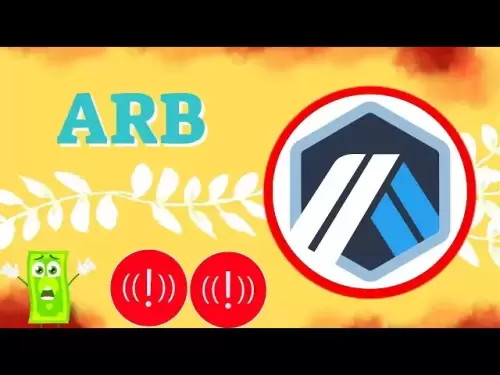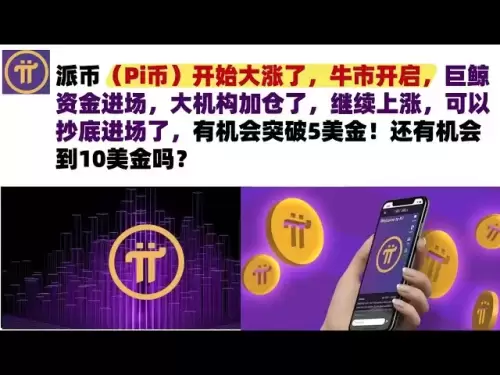-
 Bitcoin
Bitcoin $116700
0.48% -
 Ethereum
Ethereum $4213
6.27% -
 XRP
XRP $3.280
1.22% -
 Tether USDt
Tether USDt $1.000
0.02% -
 BNB
BNB $805.1
2.46% -
 Solana
Solana $180.2
2.65% -
 USDC
USDC $0.0000
0.02% -
 Dogecoin
Dogecoin $0.2412
8.50% -
 TRON
TRON $0.3356
-1.11% -
 Cardano
Cardano $0.8108
3.59% -
 Hyperliquid
Hyperliquid $43.89
8.53% -
 Chainlink
Chainlink $21.15
10.75% -
 Stellar
Stellar $0.4502
1.41% -
 Sui
Sui $3.935
4.69% -
 Bitcoin Cash
Bitcoin Cash $570.7
-1.75% -
 Hedera
Hedera $0.2636
3.28% -
 Avalanche
Avalanche $24.25
4.48% -
 Ethena USDe
Ethena USDe $1.001
0.03% -
 Litecoin
Litecoin $122.0
-0.08% -
 Toncoin
Toncoin $3.445
2.68% -
 UNUS SED LEO
UNUS SED LEO $8.979
-0.08% -
 Shiba Inu
Shiba Inu $0.00001379
6.73% -
 Uniswap
Uniswap $10.91
2.00% -
 Polkadot
Polkadot $4.106
5.39% -
 Dai
Dai $1.000
0.02% -
 Pepe
Pepe $0.00001227
9.07% -
 Bitget Token
Bitget Token $4.507
0.72% -
 Cronos
Cronos $0.1576
3.40% -
 Monero
Monero $272.0
-1.68% -
 Ethena
Ethena $0.7502
21.27%
How to set SOL's take-profit point reasonably?
Setting a take-profit point for Solana involves analyzing market trends, using technical indicators, and considering risk-reward ratios to maximize gains while managing risk effectively.
Apr 19, 2025 at 11:22 pm
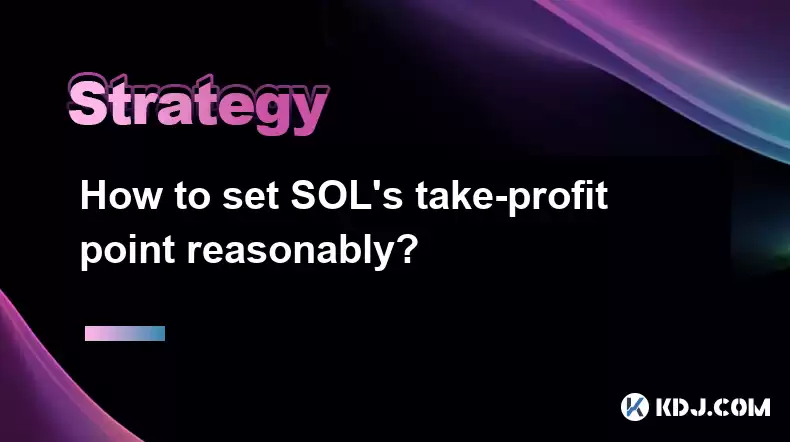
Setting a take-profit point for Solana (SOL) involves a strategic approach to maximize gains while managing risk. This process requires understanding market trends, technical analysis, and personal risk tolerance. Here's a detailed guide on how to set SOL's take-profit point reasonably.
Understanding Market Trends
Before setting a take-profit point, it's crucial to analyze the current market trends for Solana. Market trends can significantly influence the potential price movements of SOL. To do this, you should:
- Review historical price data to identify patterns and cycles.
- Use tools like moving averages, trend lines, and chart patterns to gauge the direction of the market.
- Stay updated with news and events that could impact Solana's price, such as updates to the Solana network, partnerships, or regulatory changes.
By understanding the market trends, you can better predict potential price movements and set a more informed take-profit point.
Technical Analysis for SOL
Technical analysis is a key component in setting a take-profit point. It involves using various indicators and tools to predict future price movements based on historical data. Here are some technical analysis tools you can use for SOL:
- Moving Averages: Use simple moving averages (SMA) or exponential moving averages (EMA) to identify support and resistance levels. For instance, if SOL's price is consistently above a 50-day SMA, it might indicate a bullish trend.
- Relative Strength Index (RSI): The RSI can help identify overbought or oversold conditions. A reading above 70 might suggest that SOL is overbought, while a reading below 30 might indicate it's oversold.
- Fibonacci Retracement: This tool can help identify potential support and resistance levels based on previous price movements. For example, if SOL has recently experienced a significant price increase, you can use Fibonacci retracement to find potential levels where the price might pull back before continuing its trend.
By combining these technical indicators, you can set a take-profit point that aligns with the market's technical signals.
Setting a Reasonable Take-Profit Point
Setting a take-profit point involves balancing potential gains with the risk of missing out on further price increases. Here's how you can set a reasonable take-profit point for SOL:
- Determine Your Risk-Reward Ratio: Decide on a risk-reward ratio that suits your trading strategy. For example, a 1:3 risk-reward ratio means you're willing to risk $1 to make $3. This can help you set a take-profit point that aligns with your risk tolerance.
- Use Support and Resistance Levels: Identify key support and resistance levels on the SOL price chart. Setting your take-profit point near a resistance level can be a good strategy, as these levels often act as barriers to further price increases.
- Consider Volatility: Solana can be a volatile cryptocurrency. Take into account the average daily price movement when setting your take-profit point. If SOL typically moves 5% in a day, setting a take-profit point too close to the current price might result in frequent triggers.
By considering these factors, you can set a take-profit point that is both reasonable and aligned with your trading goals.
Implementing the Take-Profit Point
Once you've determined a reasonable take-profit point, you need to implement it in your trading platform. Here's how you can do this on a typical cryptocurrency exchange:
- Log into your trading platform: Ensure you're logged into your account on the exchange where you hold your SOL.
- Navigate to the SOL trading pair: Find the SOL trading pair you're interested in, such as SOL/USDT or SOL/BTC.
- Open the order form: Click on the "Order" or "Trade" button to open the order form.
- Select "Take-Profit Order": Look for the option to set a take-profit order. This might be labeled as "Take-Profit," "Limit Order," or "Profit Target."
- Enter the take-profit price: Input the price at which you want to sell your SOL. This should be the take-profit point you've calculated.
- Set the amount of SOL to sell: Decide how much SOL you want to sell at the take-profit point. You can choose to sell all your SOL or a portion of it.
- Review and submit the order: Double-check all the details, including the take-profit price and the amount of SOL to sell. Once you're satisfied, submit the order.
By following these steps, you can effectively implement your take-profit point on your trading platform.
Adjusting the Take-Profit Point
Market conditions can change, and it's important to be flexible with your take-profit point. Here's how you can adjust your take-profit point as needed:
- Monitor Market Conditions: Keep an eye on SOL's price movements and any new developments that could impact its value.
- Reassess Technical Indicators: Regularly review the technical indicators you used to set your initial take-profit point. If the market conditions have changed, you might need to adjust your take-profit point accordingly.
- Consider Trailing Stops: A trailing stop can help you lock in profits while allowing for potential further gains. This type of order adjusts the take-profit point as the price moves in your favor, helping you capture more of the upward movement.
By staying vigilant and adjusting your take-profit point as needed, you can better manage your trades and maximize your potential gains.
Frequently Asked Questions
Q: Can I set multiple take-profit points for SOL?
A: Yes, you can set multiple take-profit points for SOL. This strategy, known as scaling out, allows you to lock in profits at different price levels. For example, you might set one take-profit point at a lower resistance level and another at a higher resistance level, allowing you to capture gains at different stages of the price movement.
Q: How does setting a take-profit point affect my tax obligations?
A: Setting a take-profit point and selling SOL at that price can trigger a taxable event. Depending on your jurisdiction, you may need to report the profit as capital gains. It's important to consult with a tax professional to understand your specific tax obligations related to cryptocurrency trading.
Q: What should I do if SOL's price reaches my take-profit point but then continues to rise?
A: If SOL's price reaches your take-profit point and continues to rise, you have a few options. You can stick with your original take-profit point and sell at that price, or you can adjust your take-profit point higher to capture more of the upward movement. Alternatively, you can use a trailing stop to automatically adjust your take-profit point as the price increases, allowing you to lock in more profits while still protecting against a potential downturn.
Q: Is it better to set a take-profit point based on a percentage gain or a specific price level?
A: Both methods have their advantages. Setting a take-profit point based on a percentage gain can help you maintain a consistent risk-reward ratio across different trades. On the other hand, setting a take-profit point at a specific price level allows you to target key support and resistance levels identified through technical analysis. The best approach depends on your trading strategy and the specific market conditions for SOL.
Disclaimer:info@kdj.com
The information provided is not trading advice. kdj.com does not assume any responsibility for any investments made based on the information provided in this article. Cryptocurrencies are highly volatile and it is highly recommended that you invest with caution after thorough research!
If you believe that the content used on this website infringes your copyright, please contact us immediately (info@kdj.com) and we will delete it promptly.
- Trump, Crypto Vehicle, and WLFI Tokens: A New York Minute on the Latest Buzz
- 2025-08-10 00:30:12
- Wheat Penny Fortune: Unearthing Valuable Coins in Your Pocket Change
- 2025-08-10 00:35:19
- AI Coin Mania: Dubai Millionaires Eye 20x Gains!
- 2025-08-09 23:10:12
- ChatGPT's Hot Takes: Meme Coins to Buy Now for a Wild 2025!
- 2025-08-09 23:10:12
- Jurassic Park Vibes in Your Pocket: The Colourful Canadian Coin Featuring a Dinosaur Eye
- 2025-08-09 23:50:12
- Altcoins on the Radar: VeChain, Ethereum, and the Shifting Crypto Landscape
- 2025-08-09 23:50:12
Related knowledge
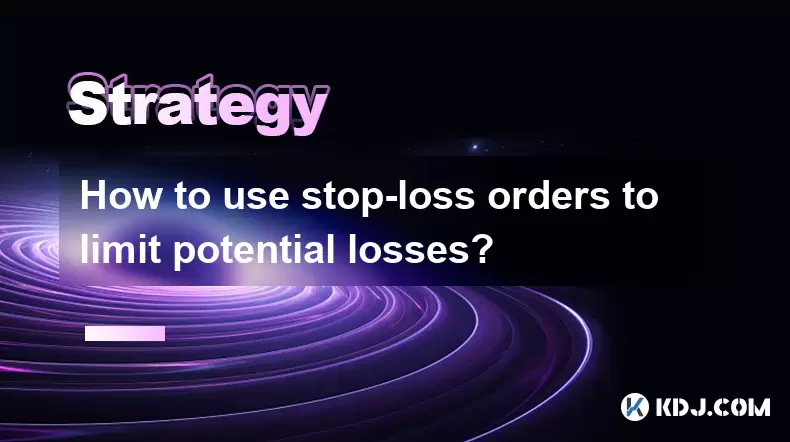
How to use stop-loss orders to limit potential losses?
Aug 08,2025 at 02:01pm
Understanding Stop-Loss Orders in Cryptocurrency TradingA stop-loss order is a risk management tool used by traders to automatically sell a cryptocurr...

How to read cryptocurrency charts and use technical analysis?
Aug 08,2025 at 11:08am
Understanding the Basics of Cryptocurrency ChartsCryptocurrency charts are graphical representations of price movements over time. These charts are es...
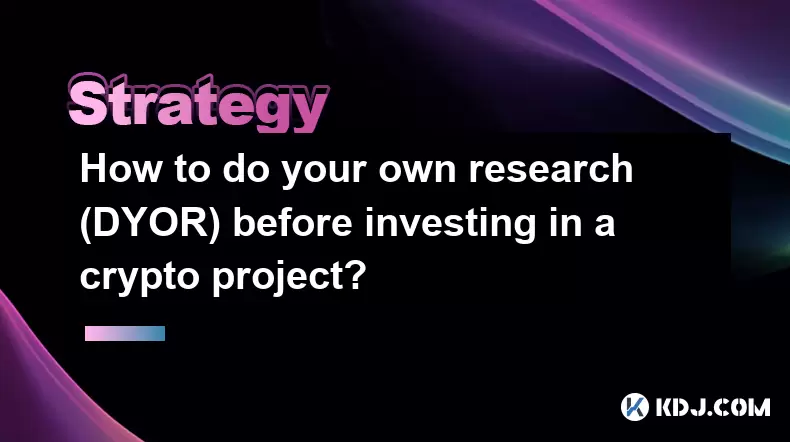
How to do your own research (DYOR) before investing in a crypto project?
Aug 08,2025 at 09:07pm
Understanding the Core Principles of DYOR in CryptocurrencyEngaging in due diligence before investing in any cryptocurrency project is essential to mi...

How to build a diversified crypto portfolio?
Aug 09,2025 at 12:21pm
Understanding the Importance of Diversification in CryptoDiversification in the cryptocurrency space is a strategy used to reduce risk by spreading in...

How to avoid common crypto investment mistakes?
Jul 13,2025 at 01:35am
Understanding the Risks of Crypto InvestmentInvesting in cryptocurrency can be highly rewarding, but it also comes with significant risks. One of the ...

What is a long-short crypto strategy?
Jul 15,2025 at 10:56am
Understanding the Basics of a Long-Short Crypto StrategyA long-short crypto strategy is an investment approach where traders simultaneously take long ...

How to use stop-loss orders to limit potential losses?
Aug 08,2025 at 02:01pm
Understanding Stop-Loss Orders in Cryptocurrency TradingA stop-loss order is a risk management tool used by traders to automatically sell a cryptocurr...

How to read cryptocurrency charts and use technical analysis?
Aug 08,2025 at 11:08am
Understanding the Basics of Cryptocurrency ChartsCryptocurrency charts are graphical representations of price movements over time. These charts are es...

How to do your own research (DYOR) before investing in a crypto project?
Aug 08,2025 at 09:07pm
Understanding the Core Principles of DYOR in CryptocurrencyEngaging in due diligence before investing in any cryptocurrency project is essential to mi...

How to build a diversified crypto portfolio?
Aug 09,2025 at 12:21pm
Understanding the Importance of Diversification in CryptoDiversification in the cryptocurrency space is a strategy used to reduce risk by spreading in...

How to avoid common crypto investment mistakes?
Jul 13,2025 at 01:35am
Understanding the Risks of Crypto InvestmentInvesting in cryptocurrency can be highly rewarding, but it also comes with significant risks. One of the ...

What is a long-short crypto strategy?
Jul 15,2025 at 10:56am
Understanding the Basics of a Long-Short Crypto StrategyA long-short crypto strategy is an investment approach where traders simultaneously take long ...
See all articles





















